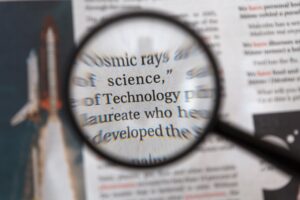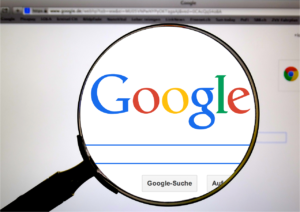Getting a quality patent can take a lot of work, but there are three qualities that should always be considered. These are prior art references, non-obviousness, and clarity.
Clarity
Patent clarity and Section 112 are both important considerations in the preparation and prosecution of a patent application.
Patent clarity refers to the requirement that a patent must be clear and concise, and must fully and particularly describe the invention and the manner in which it is to be performed. This helps to ensure that the invention is understandable to those skilled in the art and provides clear boundaries for potential infringement.
Section 112 of the U.S. Patent Act sets forth the requirements for the written description of an invention in a patent application. It requires that the specification must contain a written description of the invention that is sufficiently complete to enable a person skilled in the art to make and use the invention. The written description must also set forth the best mode known to the inventor for carrying out the invention.
By ensuring that the patent application meets the requirements for clarity and Section 112, inventors can increase the chances of a successful patent grant and reduce the risk of invalidation or rejection. Patent management software with AI capabilities can help to ensure that patent applications meet these requirements by analyzing the information provided by the inventors, check for element number usage consistency, and providing suggestions for improvement. Additionally, the software can help to streamline the patent preparation and prosecution workflow, reducing the time and resources required to prepare and prosecute a patent application.

Non-obviousness
Having a good understanding of non-obviousness is essential for patent practitioners. Patent search solutions can help to accurately find prior art, which refers to existing knowledge or technology that may be relevant to a patent application. The purpose of performing a prior art search is to determine the novelty and non-obviousness of an invention, which are key requirements for a patent grant.
Patent search solutions use advanced algorithms and machine learning techniques to search vast databases of patent and non-patent literature to find relevant prior art. The software can also use natural language processing to analyze the claims and specification of a patent application to identify keywords and concepts that may be relevant to the prior art search.
By using patent search solutions, inventors and patent lawyers can save time and resources compared to manual searches and can be confident that they are finding the most relevant prior art. This can help to improve the quality of the patent application and reduce the risk of rejection or invalidation due to prior art issues. Additionally, by finding relevant prior art early in the patent preparation process, inventors can make informed decisions about the potential for a successful patent grant and adjust their strategy accordingly.
Prior art references
Identifying and analyzing prior art references is an essential part of the patent process. This can be a tedious process that requires considerable time and effort. The key is to find out which prior art reference can help you figure out what you want to claim. There are several important factors that determine whether or not a particular piece of prior art will aid in the construction of a valid claim.
First, you need to consider the state of the prior art. If it is well-established that a particular piece of prior art is relevant, then you should be able to figure out the best way to apply it to your claim.
The best way to determine which prior art reference will be relevant is to look at the problem the inventor is trying to solve. This is the most obvious form of prior art.
The second factor is the teaching. The teaching can be implicit or explicit. It will either be a new idea or it will be a known functional equivalent. It must be something that is taught in the art.
The third factor is the motivation. The motivation must be a reasonable expectation of success. It may or may not be based on the inherent property. You need to be able to prove that the invention combines the teaching of one or more of the referenced works.
The most obvious thing that prior art can tell you is that your patent is not unique. You can also use it to make a case for non-infringement. You can do this by providing evidence that the claimed invention would not have been obvious to a person of ordinary skill in the art. This may involve citing an earlier patent or other related work.
The other obvious thing that prior art can tell you is how to avoid infringement. The easiest way to do this is to contact an attorney to assist with your search. You can also use Google Patent Search or PATENTSCOPE databases to conduct your searches.

Impact of prolonged prosecution process on patent value
Using a patent as a means of protecting an innovation is a powerful way to make an investment in the future of your product. However, the process of obtaining a patent can be cumbersome and expensive. It also assumes a certain degree of uncertainty. The speed with which a patent is issued can increase the duration of its protection. If the patent is issued early, the holder of the patent has a longer window to defend the product against infringement. This allows investors to assign a value to the patent and receive a stream of revenue from the patent’s ownership.
Prolonged prosecution can have a negative impact on the value of a patent. Taking advantage of the accelerated prosecution programs offered by the United States Patent and Trademark Office can improve the chances of receiving a favorable outcome and minimizing the overall time and cost of the patent prosecution process. It can also help you to more accurately align the lifecycle of your product with the patent protection it provides. This can improve the expected revenue stream you expect from your product and allow you to maximize the value of the patent you have acquired.
Patent management software can provide valuable insights into examiner history, including the examiners’ previous decisions and their tendencies, which can help inventors and patent lawyers to understand how best to proceed with their patent application.
By analyzing examiner history and performance, the software can suggest alternative prosecution paths, such as appealing a rejection or negotiating with the examiner to reach a mutually acceptable agreement. This information can help inventors and patent lawyers to make informed decisions about the most effective approach for their patent application.
Additionally, by tracking the progress of the patent application and the interactions with the examiner, the software can provide real-time updates and notifications, reducing the risk of missing important deadlines or opportunities. This can help to reduce the time and resources required to prosecute a patent application and increase the chances of a successful grant.
In conclusion, patent management software can provide valuable insights and guidance to inventors and patent lawyers, helping them to make informed decisions about their patent prosecution strategy and improving the chances of a successful patent grant.

